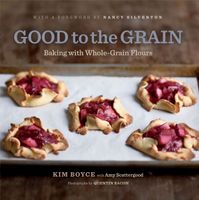Label
All
0
Clear all filters
🌷 Spring savings – save 25% on ckbk Premium Membership with code SPRING25
Amaranth
Appears in
By Kim Boyce
Published 2010
Drop a handful of amaranth flour into a bowl and you’ll see a finely ground powder that’s the color of beach sand, pale beige with a hint of yellow. Its fragrance is strong and unique, grassy with subtle undertones of chalk or stone, more like hay than a freshly mown lawn. Frankly, it can be off-putting at first, but it mellows nicely when paired with other equally bold flavors.
Despite its grassiness, amaranth is neither a grass nor a cereal grain but a leafy and often very colorful plant prized as much for its edible greenery as for its abundant seeds. It’s those seeds—a single amaranth plant is capable of producing about 50,000 of them—that are ground to make the flour.
Become a Premium Member to access this page
Unlimited, ad-free access to hundreds of the world’s best cookbooks
Over 150,000 recipes with thousands more added every month
Recommended by leading chefs and food writers
Powerful search filters to match your tastes
Create collections and add reviews or private notes to any recipe
Swipe to browse each cookbook from cover-to-cover
Manage your subscription via the My Membership page
Best value
In this section
Advertisement
Advertisement
The licensor does not allow printing of this title


